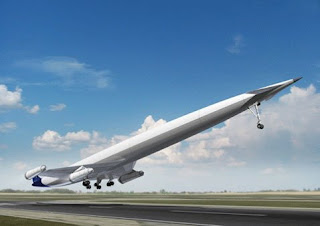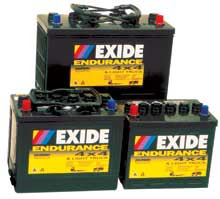 Honda has taken the motoring world by surprise by announcing at the Tokyo motor show that it will be putting the world’s first Hydrogen fuel cell car into production next year. The car will travel an estimated 270 miles at speeds of up to 100 mph and will produce only water vapor from its exhaust. It is expected to cost around $101,000 (£50,000) and will be available initially only in America and Japan.
Honda has taken the motoring world by surprise by announcing at the Tokyo motor show that it will be putting the world’s first Hydrogen fuel cell car into production next year. The car will travel an estimated 270 miles at speeds of up to 100 mph and will produce only water vapor from its exhaust. It is expected to cost around $101,000 (£50,000) and will be available initially only in America and Japan.The Hydrogen automobile will be unveiled at the Los Angeles motor show next month and is expected to closely follow the design of the FCX concept car with space for four passengers in its futuristic looking cabin. Instead of a fuel gauge the vehicle will have a range meter that tells you how far you can travel with the Hydrogen left in the tank. It is also expected to feature lithium-ion batteries to recover energy during braking and a gearless transmission.
This is truly incredible news especially given that previous estimates for a viable Hydrogen fuel cell car ranged from 10 years to 20 years in the future. Also, this vehicle will have a modest price tag which means the Hydrogen Honda will cost less than many exotic vehicles available now. The Hydrogen Future is coming sooner than we think.
http://driving.timesonline.co.uk/tol/life_and_style/driving/features/article2744803.ece



 As a part of their Project Driveway Program, General Motors Corporation is launching an online research community whereby members will have a chance to test drive the Equinox Fuel Cell vehicle. You have to live or work in the metropolitan New York City, Washington, D.C. or southern California area and sign up on their website to become eligible to test drive this Hydrogen powered vehicle.
As a part of their Project Driveway Program, General Motors Corporation is launching an online research community whereby members will have a chance to test drive the Equinox Fuel Cell vehicle. You have to live or work in the metropolitan New York City, Washington, D.C. or southern California area and sign up on their website to become eligible to test drive this Hydrogen powered vehicle. Korean scientists at the Korea Advanced Institute of Science and Technology (KAIST) have developed a Hydrogen fuel cell powered Unmanned Aerial Vehicle (UAV). The UAV weighs less than 4.5lbs (2kg) and is able to carry out a flight of over 10 hours with only one charge of its Hydrogen fuel cell.
Korean scientists at the Korea Advanced Institute of Science and Technology (KAIST) have developed a Hydrogen fuel cell powered Unmanned Aerial Vehicle (UAV). The UAV weighs less than 4.5lbs (2kg) and is able to carry out a flight of over 10 hours with only one charge of its Hydrogen fuel cell.
 As part of the Panasonic World Solar Challenge in Australian Steve Ryan is getting ready to drive more than 1,800 miles (3000km) from Darwin to Adelaide on a blend of waste oil and water. Mr. Ryan, the founder of New Zealand based Bios Fuel, will use an old 1989 Toyota Land Cruiser with nearly 250,000 miles (400,000km) on the odometer for the challenge.
As part of the Panasonic World Solar Challenge in Australian Steve Ryan is getting ready to drive more than 1,800 miles (3000km) from Darwin to Adelaide on a blend of waste oil and water. Mr. Ryan, the founder of New Zealand based Bios Fuel, will use an old 1989 Toyota Land Cruiser with nearly 250,000 miles (400,000km) on the odometer for the challenge.
 According to global growth consultancy firm Frost & Sullivan government led initiatives such as the Hydrogen fuel initiative in the United States as well as projects in the European Union are helping to accelerate active research and development technologies in Hydrogen.
According to global growth consultancy firm Frost & Sullivan government led initiatives such as the Hydrogen fuel initiative in the United States as well as projects in the European Union are helping to accelerate active research and development technologies in Hydrogen.
 Davis Guggenheim, the director/producer of the movie Inconvenient Truth has just been given a set of keys to long term test drive the BMW Hydrogen 7.
Davis Guggenheim, the director/producer of the movie Inconvenient Truth has just been given a set of keys to long term test drive the BMW Hydrogen 7.


 Mazda has unveiled a new hybrid vehicle that runs on Hydrogen but can switch to
Mazda has unveiled a new hybrid vehicle that runs on Hydrogen but can switch to 
 Engineers at Ohio State University have discovered that egg shells can be used to filter out the carbon dioxide that is produced during the seperation of Hydrogen from hydrocarbons.
Engineers at Ohio State University have discovered that egg shells can be used to filter out the carbon dioxide that is produced during the seperation of Hydrogen from hydrocarbons. Hyundai has unveiled its new Hydrogen fuel cell concept vehicle called the i-Blue at the Frankfurt International Motor Show. The company says that the zero
Hyundai has unveiled its new Hydrogen fuel cell concept vehicle called the i-Blue at the Frankfurt International Motor Show. The company says that the zero 

